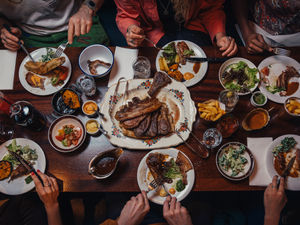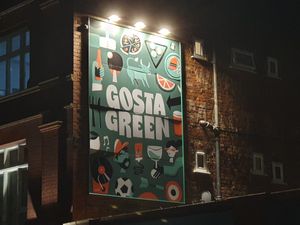Lichfield auctioneers selling antique cookery book by 19th French cuisinier who coined the term ‘chef’
A cookery book whose renowned author coined the term ‘chef’ and laid the blueprint for modern restaurant dining is set to serve up a tasty price at auction.
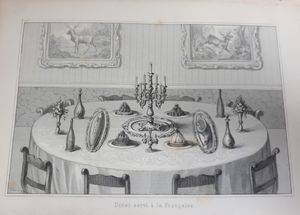
Published in 1871, The Household Cookery Book, by famous French cuisinier Urbain Dubois, goes under the hammer with Richard Winterton Auctioneers at The Lichfield Auction Centre as Lot 386 on Monday, April 3.
The book presented a different side to Dubois, whose international reputation had been consolidated with his chronicles on cuisine.
Previous volumes expounded intricate culinary art such as elaborate, architectural pièce montée – decorative confectionery centrepieces.

Yet The Household Cookery Book sought to demystify recipes and bring good food to family homes on a budget – a precursor to some series by modern day celebrity chefs such as Jamie Oliver and Raymond Blanc.
It features such mouth-watering fare as artichoke bottoms à la Villeroi, galantine of turkey with aspic-jelly and sheep’s tongues with turnips.
Sweets include profiteroles with chocolate and surprise-apples; in the drinks section is a recipe for Prince Albert’s bishop – a punch made with sugar, oranges and claret.

Published in London by Longmans, Green and Co and now long out of print, it is hoped that the book will fetch up to £600 at auction.
It is being sold by Claire Simms, 55, and her husband John, 53, a former chef and himself classically trained in the French style.
“We believe the book was purchased at a stately home auction between 1952 and 1970,” said Claire. “It was gifted to my husband, as he has a love of old cookbooks, by our lovely neighbours, who we lived next to for 20 years.
“They use to chat about cooking, old recipes and produce over the garden fence.
“The Dubois book is packed with exhaustive detail and must have been an indispensable resource for recipes in the kitchen of that big country house.
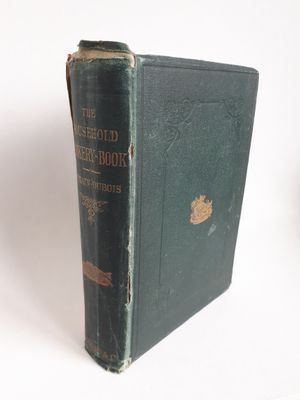
“In the back is a hand-written recipe for oyster sausages, which is especially evocative!”
She added: “We feel now is the time for someone else to appreciate the book and its heritage as we look towards the future and a new life in France in the next few years.”
In a preface, Dubois says: “This book, in which economy and simplicity formed the basis of every recipe it contains, has been written with a view to extending culinary instruction to the smallest kitchen of the most modest housekeeping: while omitting altogether the complicated theories, I have yet carefully included all the elements requisite for the preparation of good household cookery, whether for simple family meals, or for dinners more numerous with guests, or of more distinguished execution.”
He concludes: “The right ordering of the household and the due maintenance of a good table yield at once a double benefit, not only securing and preserving the health of the family but drawing closer yet its dearest ties.”

A publishers’ note on the author’s work at the end of the tome describes the household cookery book as the culmination of "a culinary series, the most comprehensive that has yet been published".
This third volume follows Artistic Cookery and Cosmopolitan Cookery, with The Household Cookery Book described as "calculated to become the guide of all modest households where the labours of the kitchen are carried on within restricted limits grounded on economy".
Born 1818 in Trets, a town in the Aix-en-Provence district of southeast France, Urbain François Dubois is best known for his series of recipe books which became classics of French cuisine.
The son of a master weaver, he trained as a chef by working in the kitchen of a hotel ran by his uncle, Jean Dubois, once a chef for French general Henri-Gatien Bertrand.
Dubois moved to Paris in 1840 and five years later left to work as a chef in several central European countries before becoming chef to Prince Alexey Orlov, an ambassador for Nicholas I of Russia.
1860 found Dubois in Berlin, where he became chef to Prince regent William of Prussia, who would become king the following year.
At the beginning of the Franco-Prussian War in 1870, he briefly returned to France but resumed his position with the Hohenzollern dynasty after the peace treaty of March 1871.
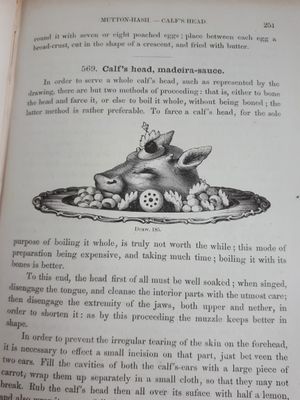
Dubois shared the head chef role with he and his compatriot taking responsibility for cooking on alternate months – an arrangement which conveniently gave the celebrated chef time to write. He remained in Berlin until 1880, dying aged 82 in Nice in 1901.
In addition to his esteemed cookery writings, Dubois is known as the creator of Veal Orloff, thinly sliced braised veal filled with a thin layer of finely chopped mushrooms and onions and topped with a Mornay sauce.
He is also credited with introducing the now conventional service à la russe – in which dishes are brought to table sequentially and served, instead of all at once – to western Europe.
By contrast, the older service à la française sees several courses brought to the table simultaneously in an impressive display for diners to plate the food themselves.
At the start of The Household Cookery Book, Dubois weighs up the pros and cons of both options but it is service à la russe which remains the blueprint for modern dining.
It is a style of service which also required a menu and Dubois dubbed the person in charge of this the chef – a title derived from ‘chef de cuisine’ yet not a conventional term until that point.
Richard Winterton Auctioneers’ Antiques & Home Sale at The Lichfield Auction Centre on Monday, April 3, starts at 9.30am.
The catalogue will be online a week before the sale via richardwinterton.co.uk

